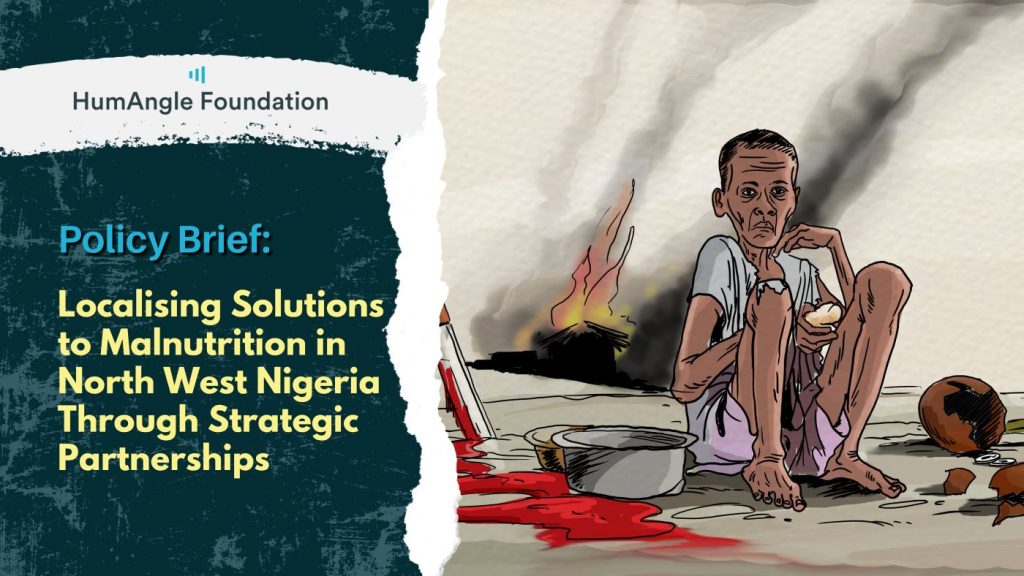Introduction
Over the last two decades, all six geopolitical regions in Nigeria have experienced some form of insecurity. From terrorism and communal violence to banditry and displacement, the cumulative effects have left a trail of humanitarian emergencies, worsened by poverty, poor governance, limited security and support to access farmlands safely, and weak healthcare systems.
One of the most devastating but underreported consequences of this complex insecurity is a silent, yet deadly, malnutrition crisis, especially in northern Nigeria. In Katsina State, over 1.2 million children are currently affected by acute malnutrition, with some local government areas (LGAs) exceeding emergency thresholds of 30%. Without immediate and sustained intervention, the lives of hundreds of thousands of children remain at risk.
What’s New?
In May 2025, Médecins Sans Frontières (MSF), a global medical humanitarian organisation, convened a high-level meeting with Dikko Umar Radda, the Governor of Katsina State, who also chairs the North West Governors Forum. MSF presented data highlighting the severity of the region’s malnutrition crisis and proposed strategies for coordinated, multi-stakeholder action. The governor responded with strong political will, calling for sustainable, locally anchored solutions, legislative reforms, and private sector participation to mobilise resources for action.

Key findings
- Crisis Magnitude:More than 1.2 million children are currently malnourished in Katsina State. In some LGAs, such as Mashi, prevalence exceeds 30%, which qualifies as a public health emergency.
- Escalating Demand:Admissions at nutrition centres increased by 52% in early 2025 compared to the previous year, outpacing supply and available funding.
- Critical Funding Gap: A ₦9 billion shortfall in Ready-to-Use Therapeutic Food (RUTF) funding threatens to disrupt life-saving treatments by July 2025.
- Root Causes:Large family sizes, extreme poverty, low literacy, gender inequality, food insecurity, and the social stigma surrounding nutrition all contribute to the crisis.
- Restricted access to agricultural land means that many artisanal farmers cannot access farms; those who attempt to do so often face fatal consequences or abduction. Numerous communities are required to gather resources to fulfil levies and taxes imposed by non-state actors.
- Emerging Political Momentum: Governor Dikko Radda has committed to supporting a nutrition action plan, calling for local production of therapeutic foods, policy reform, and multi-sectoral partnerships.

Why does it matter?
Malnutrition is a multidimensional crisis with severe human and societal consequences:
- Health: Malnutrition weakens immune systems, increases vulnerability to disease, and is the underlying cause of over 45% of child mortality globally.
- Education: Undernourished children are less likely to attend or succeed in school, exacerbating cycles of poverty and inequality.
- Security: Malnourishment contributes to long-term instability by eroding human capital and increasing dependency on fragile public systems.
- Governance and Trust: Delayed or inadequate response can fuel public distrust in government and humanitarian actors.

What can be done?
- Develop and broadcast local language explainers (Hausa, Fulfulde, French) on best nutrition practices.
- Conduct door-to-door campaigns, town halls, and listening groups targeting mothers and caregivers.
- Leverage youth and religious influencers to drive behavioural change.
- Align messaging to create a unified voice for advocacy and resource mobilisation.
- Conduct local context analysis and early warning assessments to ensure the safety of outreach teams and aid workers.
- Guide partners in implementing sensitive community entry protocols to minimise risks in a highly volatile environment.
Conclusion
The malnutrition crisis in Katsina State indicates a larger problem in the northwestern region. It is also a humanitarian emergency, worsened by governance, communication, and development challenges. Addressing it requires a coordinated, localised, and sustainable approach. Now is the time to act. Investing in this partnership will save lives and lay the foundation for resilient, informed, and healthier communities across Nigeria’s northwest.
Further reading
- UNDP (2023). Conflict and Development in Northeast Nigeria. https://nigeria.iom.int/news/new-iom-flagship-report-sheds-light-displacement-and-data-solutions-northeast-nigeria
- World Bank (2023). Human Capital and Governance: An Overview of Nigeria’s Challenges. https://openknowledge.worldbank.org/entities/publication/759a0f7d-93cd-5ad2-acac-a16ae33d8664
- IOM (2023). Data Solutions and Displacement: An Analysis of Trends in Northeast Nigeria. https://nigeria.iom.int/news/new-iom-flagship-report-sheds-light-displacement-and-data-solutions-northeast-nigeria
- UNICEF (2023). The Cost of Conflict on a Generation: Child Welfare and Access to Education in Nigeria. https://www.unicef.org/nigeria/press-releases/conflict-northeast-nigeria-100-billion-economic-crisis-and-lost-generation-warns
- HumAngle (2024). MSF Raises Concerns Over Soaring Cases of Acute Malnutrition in North West Nigeria. https://humanglemedia.com/msf-raises-concerns-over-soaring-cases-of-acute-malnutrition-in-north-west-nigeria/
- HumAngle (2024). Rising Child Malnutrition Amid Food Insecurity and Conflict in Northern Nigeria. https://humanglemedia.com/rising-child-malnutrition-amid-food-insecurity-and-conflict-in-northern-nigeria/
- NewsDiary Online (2024). Katsina Governor Reaffirms Commitment to Ending Acute Malnutrition Crisis. https://newsdiaryonline.com/katsina-governor-reaffirms-commitment-to-ending-acute-malnutrition-crisis/




